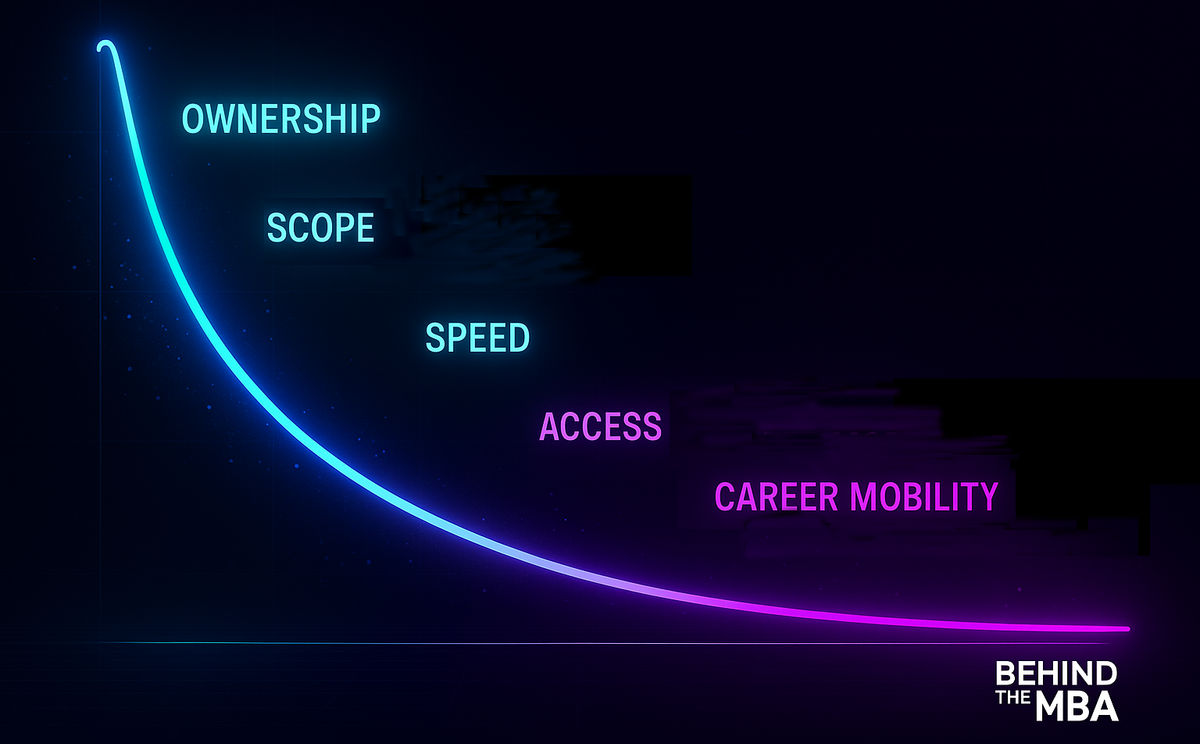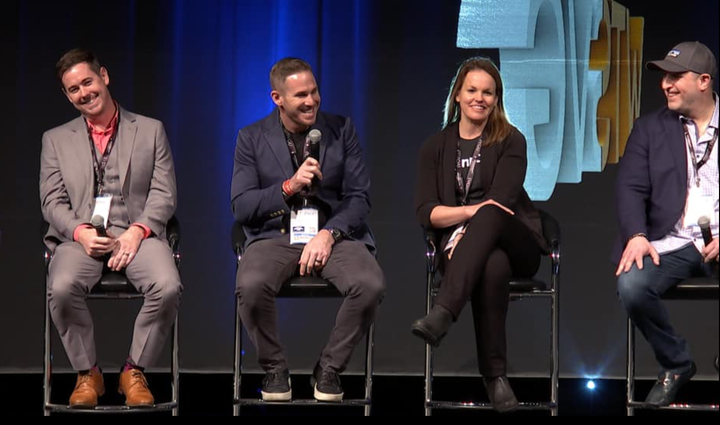The Best Opportunities You’re Not Looking At (Yet)

Most MBAs don’t end up at the ten companies we all talk about. I’ve written about this before – the long tail hires most grads, not the big brands that headline MBA employment reports. By "long tail," I am referring to thousands of smaller or lesser-known companies that might hire 1-2 MBAs per cycle (vs. the few large firms that recruit larger cohorts on campus).
Whether you're refining your application and career goals or currently recruiting, targeting the long tail opportunities can accelerate your career. In these companies, you could get greater ownership, scope, speed, access, and career mobility. Depending on your role, you could be working more closely with customers, owning a P&L, making consequential decisions, and seeing the impact of your work – quickly.
If that's the kind of impact you're seeking in a post-MBA career, the long tail is where it happens.
Let's talk about it....
Here's what the long tail actually offers
1) Ownership
In long tail roles, ownership doesn't just mean you back up the decisions other people are making. Instead, you could get a seat at the table and be on the hook for decisions that matter. You may be responsible for a piece of the business – whether that's revenue, costs, operations, customer management, etc.
In my first big post-MBA role at Patch (then part of AOL), I oversaw the P&L for an entire region. It was crazy responsibility for my early 30s, and there was a lot of money at stake. When the business model wasn't meeting expectations, I was actually in a position to make decisions and do something about it – and I did. This opportunity – and scope of responsibility – would simply not have existed at one of the more "traditional" companies I was talking with through campus recruiting.
2) A broader scope – on purpose
Large organizations generally hire talent for specific roles on specific teams. On the other hand, smaller companies enable team members to flex beyond the "lanes" of their titles and job description. This is where the growth and opportunity can really take flight.
For example, I joined Reputation in a product marketing role – the only marketer to support our B2B business at the time. However, it was clear from the first few weeks that my role would expand beyond product positioning, messaging, and client enablement. Soon after, I was involved with go-to-market activities and enabling the sales team, assuming a scope of responsibilities that spanned the client lifecycle.
3) Accelerated learning
Larger companies and big brands typically do not move quickly. Of course, there are some exceptions, but large teams and departments generally adopt a protocol for decision-making and execution that takes time. Alternatively, smaller companies and tighter teams can make faster decisions. This fosters an accelerated feedback loop and a lot of learning opportunities.
I joined Broadly as the founding Head of Marketing with no structure, processes, or team. Not only did I have ownership and a broad scope, but I also learned quickly what worked and didn't. In other words, the impact of my decisions – and the feedback loop – was hours and days... not months and quarters. This created a cycle of continuous experimentation and accelerated learning, which were less likely to occur in the marketing org at a large tech or traditional CPG company.
4) Proximity to decision-makers
Roles at long tail organizations might get you closer to senior leadership – those who set the strategy and determine where the company will make big bets. You could be in the room where these decisions are discussed and made, and learn how leadership thinks and collaborates.
Even with a product marketing manager title at Reputation, I collaborated with the VPs of Product and Sales on a daily basis. We just didn't have the layers of bureaucracy – or the large team – to navigate any other way. As a result, I often heard what was top of mind for these executives, what the priorities were, and where my contributions could make a difference.
5) Career mobility
When you can flex in any of the above areas, your opportunities to move around – and up – get easier. You might become a greater asset to your current company and earn promotions more quickly, or your skillset and experience may become a lot more attractive to competitors in your industry. Either way, your ownership, scope, learning, and proximity can help you access new opportunities more quickly.
Across each of the companies I've mentioned, along with Signpost, I built a portfolio of decisions and track record of results that provided evidence to pursue the next opportunity.
While my professional experience has taken place largely in startup environments, you don't need to join a startup to spot opportunities to assume ownership, greater scope, accelerate your learning, and gain greater access to decision-makers.
How to spot a real long tail role
Before you commit to a company, do this:
- Sanity check the revenue model
- Understand the decisions you'd own
- Determine the feedback loop for your decision-making
These factors will help you determine whether you'll truly have impact, ownership, and accelerated learning. Of course, you may not know the truth until you work at the company... but this is a solid starting point.
How to spot the red flags
Take note of what the company isn't saying in the getting-to-know-you process. If the hiring manager and other stakeholders aren't committal, if there's no budget assigned for activities that need them, and if decisions currently get bogged down by committee.... you might be better off somewhere else.
Where to actually find long tail roles
This type of search will take you out of structured, on-campus recruiting processes. After you define the problems you want to solve, and the industry you want to solve them in, look for category leaders. You may need to niche down – but that will focus your efforts.
Check for new business lines or spin-outs within larger companies, organizations with just one MBA on LinkedIn, and startups. Then, network – strategically.
Choosing between a big brand and long tail opportunity
Consider what you want and need out of your next role. If you prioritize the factors discussed in this post, create your list of so-called long tail companies. Specifically, start with list of 20-40 companies of interest and begin your outreach.
However, if you would feel more at home within a larger company, target the big brands and go hard through on-campus and other recruiting pipelines.
Either way, this isn't a binding decision for the rest of your career. Most post-MBA careers span decades and take a lot of twists and turns. Enjoy the journey!
Share your perspective with laura@behindthemba.com. Subscribe to our newsletter to get insights delivered straight to your inbox.



